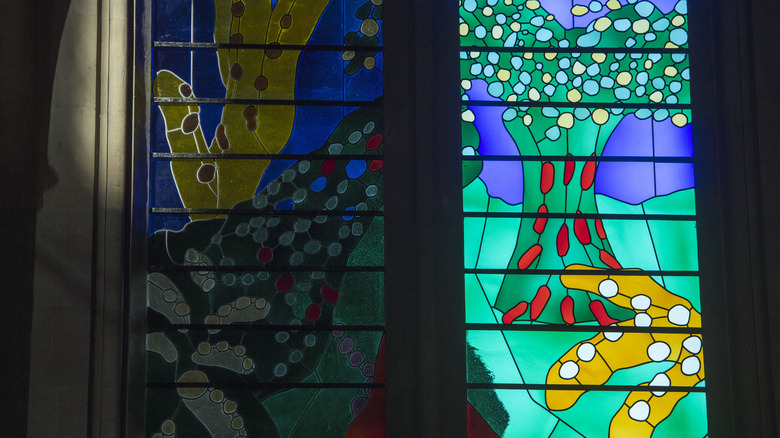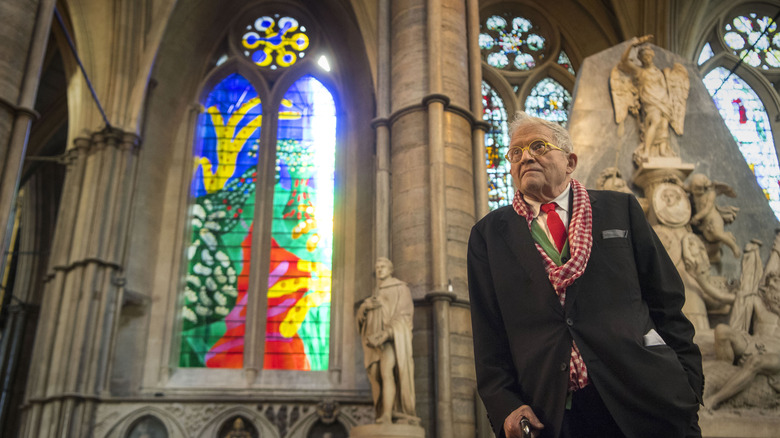The Truth About The Queen Elizabeth II Window In Westminster Abbey
Westminster Abbey was the setting of some of the most significant moments in the life and reign of Queen Elizabeth II. In 1947, when she was still Princess Elizabeth and heir apparent to the British throne, she married Prince Philip of Greece, later known as H.R.H. The Duke of Edinburgh at Westminster Abbey per the Westminster Abbey website. Just over four years later, King George VI died on February 6, 1952, making her Queen Elizabeth II — and the coronation took place at Westminster Abbey on January 2, 1953. When the queen died on September 8, 2022, she had reigned for 70 years and 214 days, making her the longest-reigning monarch in British history. Her funeral was also held at Westminster Abbey.
Because of the many notable moments connecting the monarch to Westminster Abbey, a special window was created in her honor — and it's been hanging since 2018, per the Westminster Abbey website. The Very Reverend Dr. John Hall, Dean of Westminster, commissioned "The Queen's Window" from legendary British artist David Hockey to celebrate Elizabeth II's reign. As reported by Architectural Digest, Hockney enjoyed using the iPad as the design medium for the piece, as it is backlit similarly to a stained glass window with sunshine streaming through. It also lends a modern touch to the old-fashioned medium of stained glass. Helen Whittaker of the British stained glass studio, Barley(which fabricated Hockney's design), said, "We're very grateful that he's putting our profession on the map because stained glass is always seen as the poor sister to the art world."
The window depicts the countryside beloved by the queen
The Very Reverend Dr. John Hall discussed his vision for "The Queen's Window" with The Guardian, sharing: "I didn't want anything figurative or heraldic, that would have been crass, I think. So to have a country scene for a woman who absolutely loves the country, you get those images of the Queen driving her Land Rover in her mac up in Scotland ... It is an ideal celebration. This is not a commemoration, it is a celebration." David Hockney's design depicts the countryside of the Yorkshire Wolds and features a hawthorn bush because, as Hockney told Architectural Digest, "it had to be celebratory really, so I thought, well, the most celebratory moment in the English landscape is the hawthorn blossom coming out."
Hockey had painted a series of paintings of the Yorkshire Wolds while living in Bridlington, England, for a few years; the artist usually resides in Los Angeles, California. Per the Westminster Abbey website, the window is similar to the paintings, collages, and digital works from his 2012 Royal Academy exhibition, "A Bigger Picture." Hockney also took inspiration from the stained glass works of artists Marc Chagall and Henri Matisse. The stained glass is not painted, unlike other stained glass windows at Westminster Abbey; it came from Glashütte Lamberts in Bavaria, a company that continues to produce glass using traditional, hand-blown techniques. Hockney didn't participate in the physical creation of the glass panels with Barley studios, but the finished piece includes a hand-signed pane with his signature.

